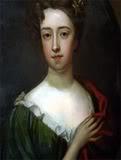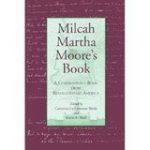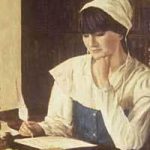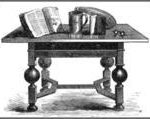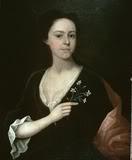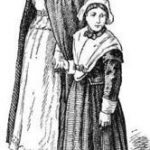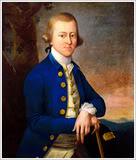Early American Poet and Writer
Elizabeth Graeme was born on February 3, 1739, to a prosperous Philadelphia physician, Thomas Graeme, and his wife, Anne Diggs Graeme. Elizabeth was a premature baby, and was often described as frail and prone to illness throughout her life. She was the youngest of nine children, but because of various difficulties and childhood diseases, only three of her siblings were still alive when she was born.
Early on, Anne Graeme read stories to Elizabeth and her siblings before bedtime, and she later encouraged Elizabeth’s interest in knowledge and learning. As the daughter of prominent doctor, Elizabeth received a well-rounded education from her parents and tutors, and she composed poems, letters, and songs. She wrote under a variety of pen names, frequently using the pseudonym Laura.
Elizabeth made her debut into Philadelphia society in the 1750s. The Philadelphia Dancing Assemblies, established in 1748, was the focal point of social activity in the city. It was there that she attracted the attention of William Franklin, son of the noted printer and philosopher, Benjamin Franklin.
William courted Elizabeth with visits to Graeme Park, and in the summer of 1756, he proposed and she accepted. But Ben Franklin traveled to England to lobby in Parliament for the replacement of the Proprietary government, and William went along as his father’s aide, and also to attend law classes at the Inns of the Court in London. William returned to the colonies in 1761 as Governor of New Jersey with a different Elizabeth as his wife.
Elizabeth’s parents sent her to England and Scotland in 1764 to revive her poor health. While in England, Elizabeth visited relatives in Scotland, had an audience with King George, and met several “leading literary and scientific figures” of the day at fashionable private gatherings called salons.
Elizabeth’s mother and her sister Jane died in 1765, while Elizabeth was in England, and she returned home to take up the role of hostess at her father’s house in the city as well as at Graeme Park. Dr. Graeme retired from medicine and began to spend a majority of his time at Graeme Park.
Inspired by the salons in England, Elizabeth started her own gatherings of Philadelphia’s most influential statesmen, writers and musicians. Her Attic Evenings attracted people like Francis Hopkinson, Benjamin West, John Dickinson, Dr. Benjamin Rush, their wives and companions, and Annis Boudinot Stockton, and Elizabeth became a poet of some renown.
Elizabeth also helped to raise Anna and John Young, the children of her deceased sister Jane. Like her Aunt Elizabeth, Anna Young also wrote poetry about politics, women, and courtship. She married Dr. William Smith in 1775. Elizabeth maintained a strong correspondence with her niece until Anna died in 1780 from complications after childbirth.
One winter’s evening, December 7, 1771, Dr. Rush brought Henry Hugh Fergusson, a recent Scottish immigrant, to one of Elizabeth’s salons. The attraction between her and Henry appears to have been immediate and very strong. Dr. Graeme did not approve of the match – Henry was eleven years younger than Elizabeth and a penniless immigrant, not suitable for a prominent physician’s child.
In spite of her father’s disapproval, Elizabeth married Henry in a secret ceremony on April 21, 1772. Her new husband encouraged her to tell her father that she had married without his consent. On September 4, 1772, the day she decided to tell Dr. Graeme, he died of a heart attack while walking the grounds of Graeme Park.
Elizabeth wrote, in a letter to a friend, of looking out the window and watching her father walk down the path toward her in the mansion. She had resolved to tell him of her marriage, but as he approached, he fell down and died of a heart attack, never learning the truth.
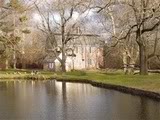
Image: Graeme Park
In 1739, Dr. Graeme bought Fountain Low and renamed it Graeme Park. A one-room deep, 2-1/2-story colonial house with rich Georgian interiors, the mansion has remained virtually intact since the late 18th century. Dr. Graeme remodeled the interior to reflect the English style of the mid 1700s. Elaborate paneling was installed in several rooms and fine marble and imported ceramic delft tiles graced the fireplaces. The family used the property as a summer residence, and kept their primary residence at Carpenter’s Mansion on Society Hill in Philadelphia.
Upon her father’s death, Elizabeth was the only one of his children still alive, so she inherited Graeme Park, her family’s country estate. But according to the laws in effect at that time – a married woman was not allowed to own property – Henry Fergusson actually gained legal title to the property.
With his sudden new fortune, Henry was able to quickly ascend the Philadelphia society ladder. He traveled to England twice and became director of a prominent Philadelphia library. At the library’s annual meeting on November 5, 1775, he was commissioned as a Justice of the Peace, and served as Magistrate under British rule and was the last to have this position under colonial government. This position would later give him an allowance from the British treasury.
In September of 1775, he sailed to England a third time to settle some family matters in Scotland, just as the American Revolution was beginning to gather steam. Elizabeth wrote to him of the political unrest in the colonies and advised him to stay in England, and he did stay in the British Isles until 1777.
Henry returned to Philadelphia by way of New York City with Sir William Howe, commander of British forces in America, and declared his loyalty to Great Britain. Elizabeth did not know until September 25, 1777, that he was in the country. That day she received a letter asking her to meet him in Philadelphia the next day.
Her reply was written as a poem based on the fable, The Country Mouse and the City Mouse, in which she told Henry that she was too afraid of the consequences if she crossed the lines between the Americans and the British. They met instead at Germantown, for she “could not bear to see the British troops in Possession of the Capitol.”
Henry’s loyalty to the British made matters very uncomfortable for Elizabeth. He served with the British during the occupation, and was appointed Commissary of American prisoners on December 1, 1777. Rumors of British mistreatment of the American prisoners was widespread, and Henry took his new position seriously.
He established good communication with the Patriot Commissary of Prisoners Elias Boudinot in order to improve the condition of soldiers in their care. Fergusson informed Boudinot that it was the responsibility of each army to provide for their own prisoners.
In October 1777, Fergusson involved Elizabeth in his loyalist activities by sending her as a messenger to General George Washington to ask him to renounce the Declaration of Independence and to surrender to Lord Howe. Needless to say, Washington was insulted, and Elizabeth’s loyalty to the American cause was called into question.
In another incident, Elizabeth was asked to present a bribe to a major in the Continental Army from Dr. William Johnston of the British Peace Commission. Adam Fergusson, one of Henry’s relatives, was a member of that Peace Commission, and may have suggested using her for that errand. The bribe attempt triggered a scandal that ruined Elizabeth’s reputation as a patriot.
But Elizabeth remained a patriot throughout the Revolution. There was no doubt, however, about her husband’s loyalties. The Confiscation Act of March 1778 gave Loyalists until April 21 to surrender. Failure to appear before the Supreme Executive Council meant forfeiture of all property, disinheritance for heirs and if captured, hanging.
On May 13, 1778, a Lancaster paper accused Henry Fergusson of treason, and his trial was scheduled for June 24. Elizabeth, knowing that Henry would not comply, wrote a petition to be presented the day of Henry’s trial in an attempt to save her property. She tried to prove that Henry “was not an Inhabitant of America at any time after the Declaration of Independence, but as a subject of Britain.”
Henry was judged a traitor by the Supreme Executive Council of Pennsylvania the following October, and his property, including Graeme Park was confiscated as punishment for his treason.
Henry left Philadelphia with Howe’s troops, and was in New York for the rest of the year. In 1779, Elizabeth went to visit Henry in Elizabethtown, New Jersey. Immediately following their meeting, Henry sailed for Boston. This was the last time they saw each other. He returned to England and separated from his wife permanently.
Since their marriage Henry had crossed the Atlantic Ocean six times, and had lived with Elizabeth little more than two years. Elizabeth wrote that he “is now on Earth without Home or Habitation; so much has this Coming of the British done for Him.”
The last direct contact they had was when Elizabeth answered Henry’s request for money in 1784. After this, all contacts were through a second party, usually Elizabeth’s nephew, James Young. The last known letter by Henry was written on August 1786 to James Young. On August 11, Henry had arrived in London from North England.
Elizabeth attempted to regain her family’s estate and her reputation. Several influential people championed her cause before the government. Many of her defenders were old friends from her Attic Evenings. The list of helpers is a Who’s Who of Pennsylvania politics at that time – Elias Boudinot, George Meade, Dr. Benjamin Rush, John Dickenson, Robert Morris, Francis Hopkinson, Dr. William Smith, and a host of others were “remembered with gratitude.”
In 1781, after three years of legal entanglements, the Pennsylvania court returned Graeme Park to Elizabeth. She then lived a quiet life with her lifelong friend Eliza Stedman, publishing some of her poetry and other writings in periodicals such as The Pennsylvania Magazine, American Monthly Museum, Columbian Magazine and Pennsylvania Packet.
Her poems reflect her eclectic interests in science, politics and the quiet life. She wrote one poem on the discovery of Uranus by astronomer William Herschel, and another on the death of Prince Leopold of Brunswick. She maintained close contacts through letters with Patriots Hopkinson, Rush, Boudinot, Stockton, and her niece, Anna Young Smith.
Plagued by ill health and financial problems, Elizabeth sold Graeme Park to her niece’s husband, Dr. William Smith, and she and Eliza moved out of the mansion in 1795. Elizabeth lived out her life with the clock maker Seneca Lukens in the nearby town of Horsham, Pennsylvania, near Graeme Park. Her last years were difficult.
Elizabeth Graeme Fergusson died on February 23, 1801 in Horsham, while being tended by Dr. Benjamin Rush. She was buried at Christ Church in Philadelphia.
SOURCES
Wikipedia: Graeme Park
Elizabeth Graeme Fergusson – PDF FILE
